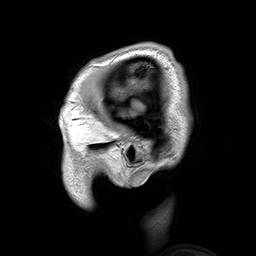Specialty medical genetics ICD-9-CM 756.0 DiseasesDB 22519 | ICD-10 Q75.3 OMIM 248000 MedlinePlus 003305 | |
 | ||
Macrocephaly is a condition in which the head is abnormally large; this includes the scalp, the cranial bone, and the contents of the cranium.
Contents
Causes
Macrocephaly may be pathological, but many people with abnormally large heads or large skulls are healthy. Pathologic macrocephaly may be due to megalencephaly (enlarged brain), hydrocephalus (water on the brain), cranial hyperostosis (bone overgrowth), and other conditions. Pathologic macrocephaly is called "syndromic" when it is associated with any other noteworthy condition, and "nonsyndromic" otherwise. Pathologic macrocephaly can be caused by congenital anatomic abnormalities, genetic conditions, or by environmental events.
Many genetic conditions are associated with macrocephaly, including familial macrocephaly related to the holgate gene, autism, PTEN mutations such as Cowden disease, neurofibromatosis type 1, and tuberous sclerosis; overgrowth syndromes such as Sotos syndrome (cerebral gigantism), Weaver syndrome, Simpson-Golabi-Behmel syndrome (bulldog syndrome), and macrocephaly-capillary malformation (M-CMTC) syndrome; neurocardiofacial-cutaneous syndromes such as Noonan syndrome, Costello syndrome, Gorlin Syndrome, (also known as Basal Cell Nevus Syndrome) and cardiofaciocutaneous syndrome; Fragile X syndrome; leukodystrophies (brain white matter degeneration) such as Alexander disease, Canavan disease, and megalencephalic leukoencephalopathy with subcortical cysts; and glutaric aciduria type 1 and D-2-hydroxyglutaric aciduria.
At one end of the genetic spectrum, duplications of chromosomes have been found to be related to autism and macrocephaly; at the other end, deletions of chromosomes have been found to be related to schizophrenia and microcephaly.
Environmental events associated with macrocephaly include infection, neonatal intraventricular hemorrhage (bleeding within the infant brain), subdural hematoma (bleeding beneath the outer lining of the brain), subdural effusion (collection of fluid beneath the outer lining of the brain), and arachnoid cysts (cysts on the brain surface).
Diagnosis
Macrocephaly is customarily diagnosed if head circumference is greater than two standard deviations (SDs) above the mean. Relative macrocephaly occurs if the measure is less than two SDs above the mean, but is disproportionately above that when ethnicity and stature are considered. In research, cranial height or brain imaging is also used to determine intracranial volume more accurately.
